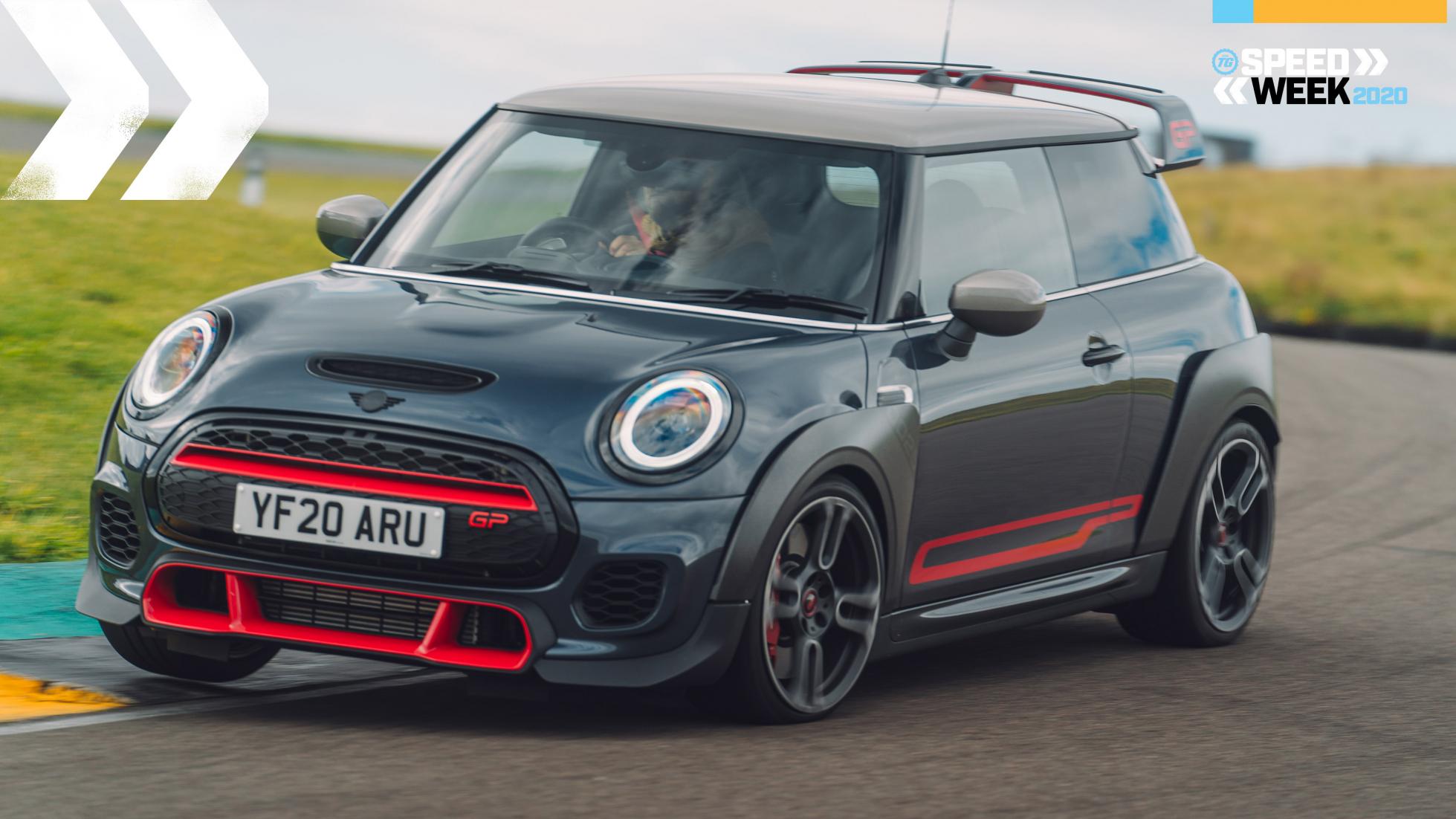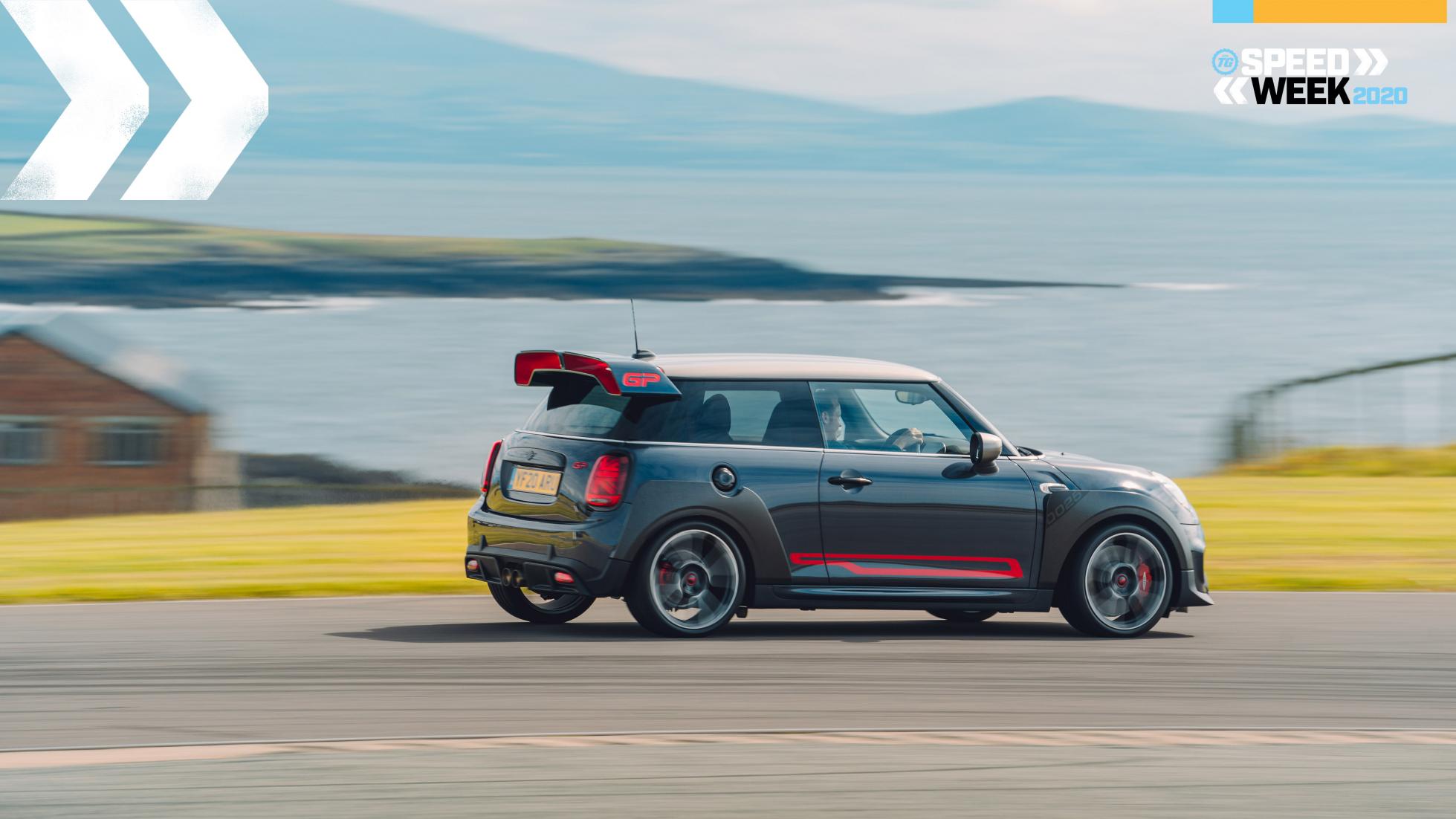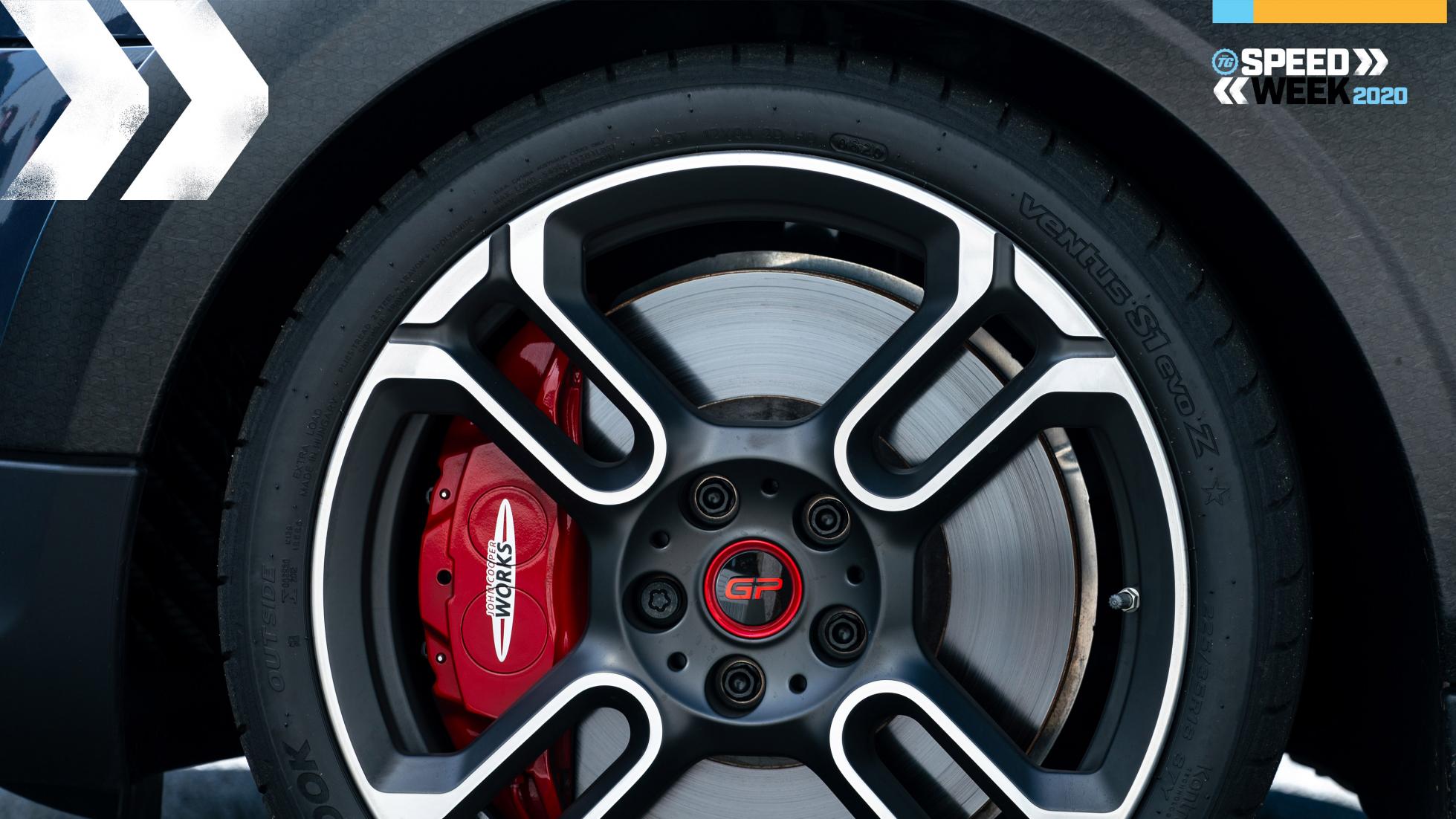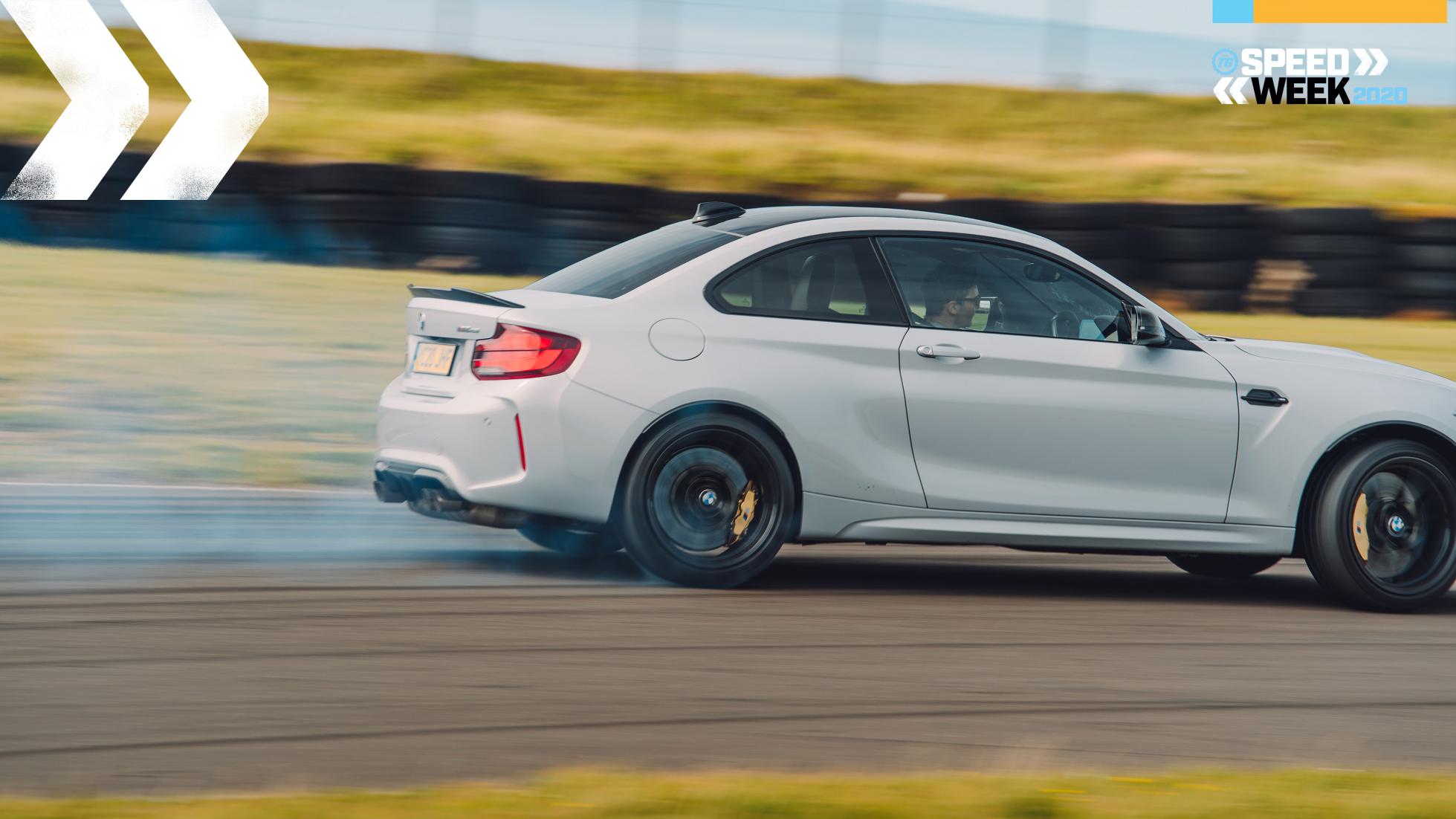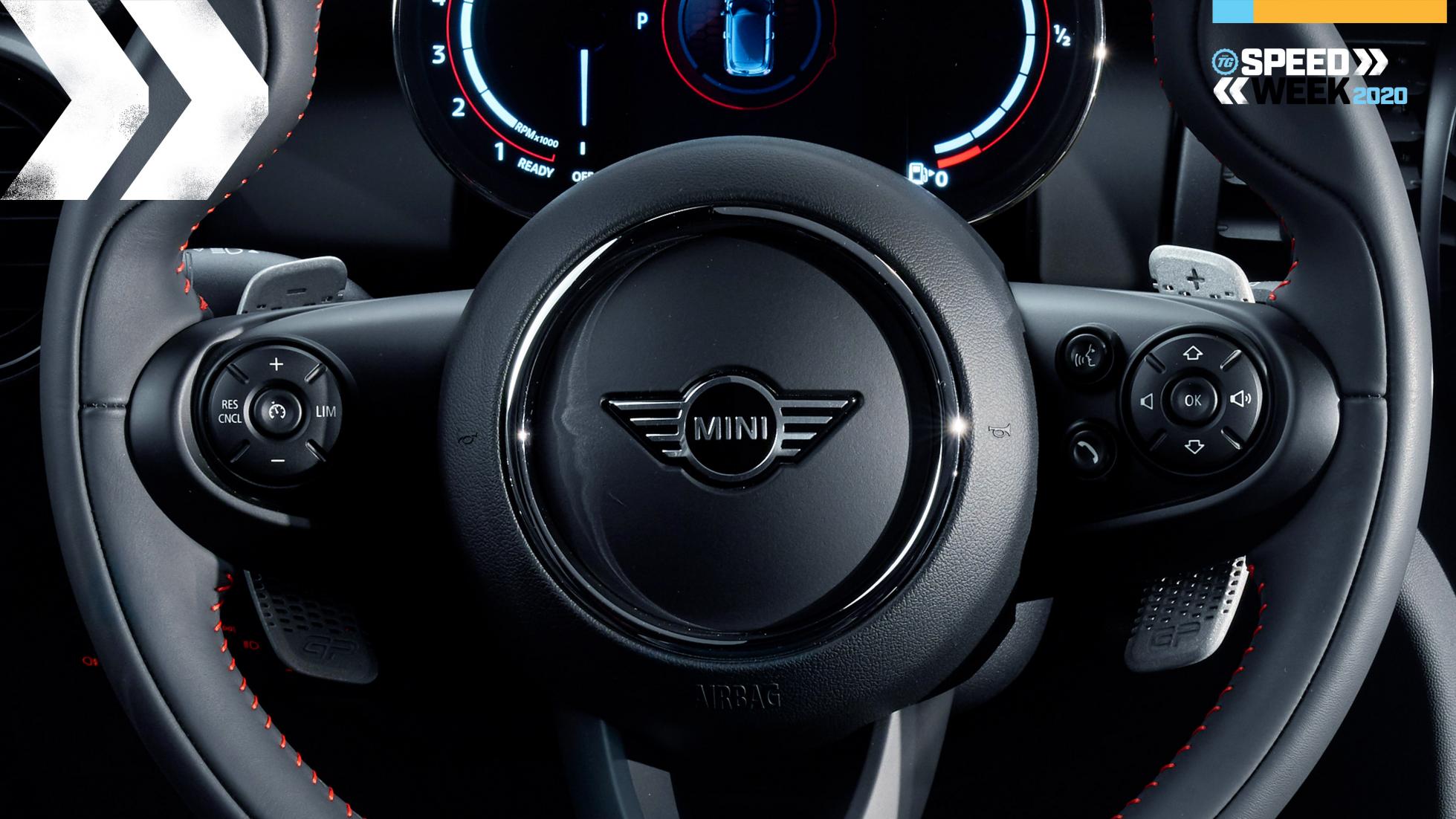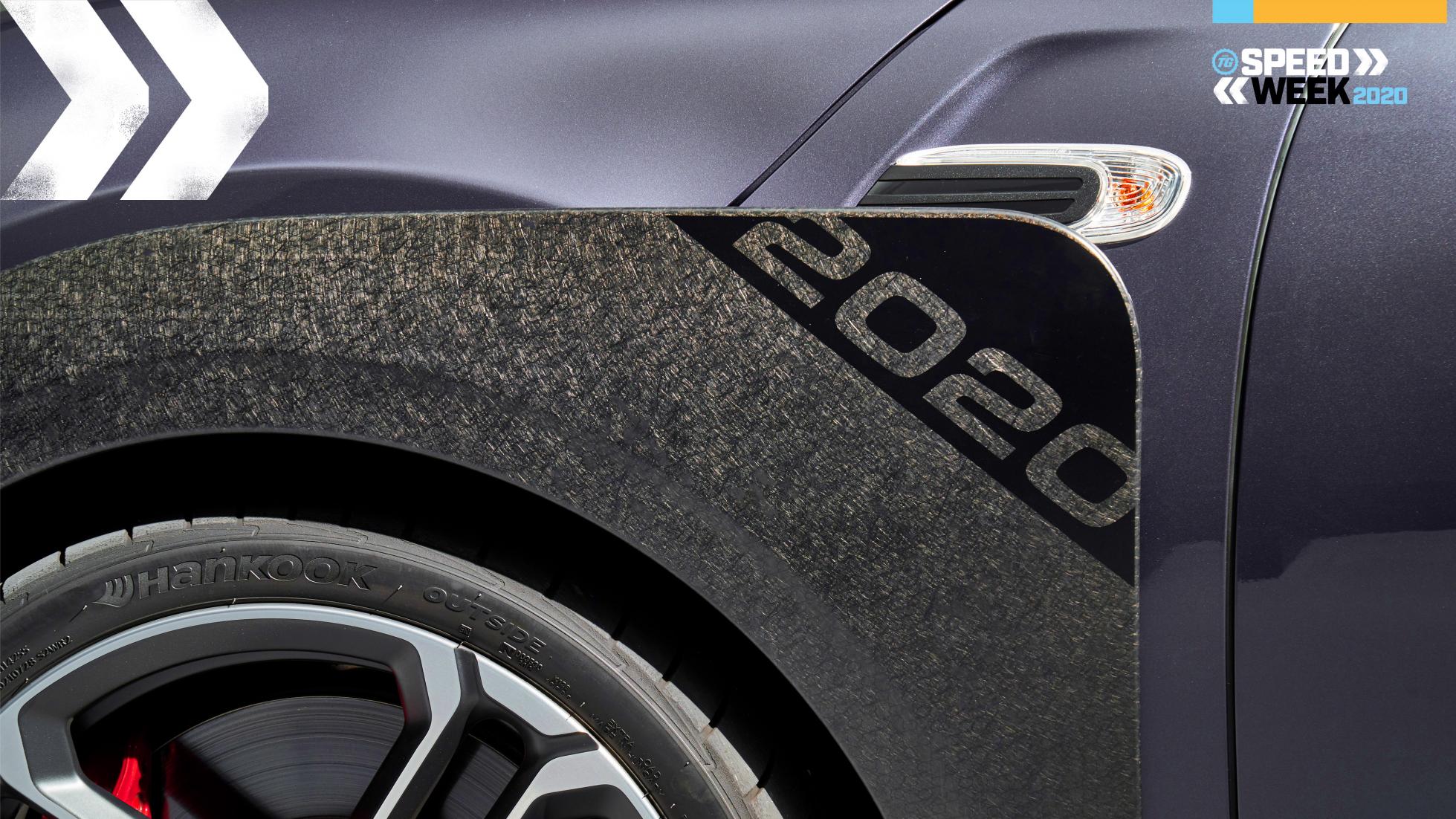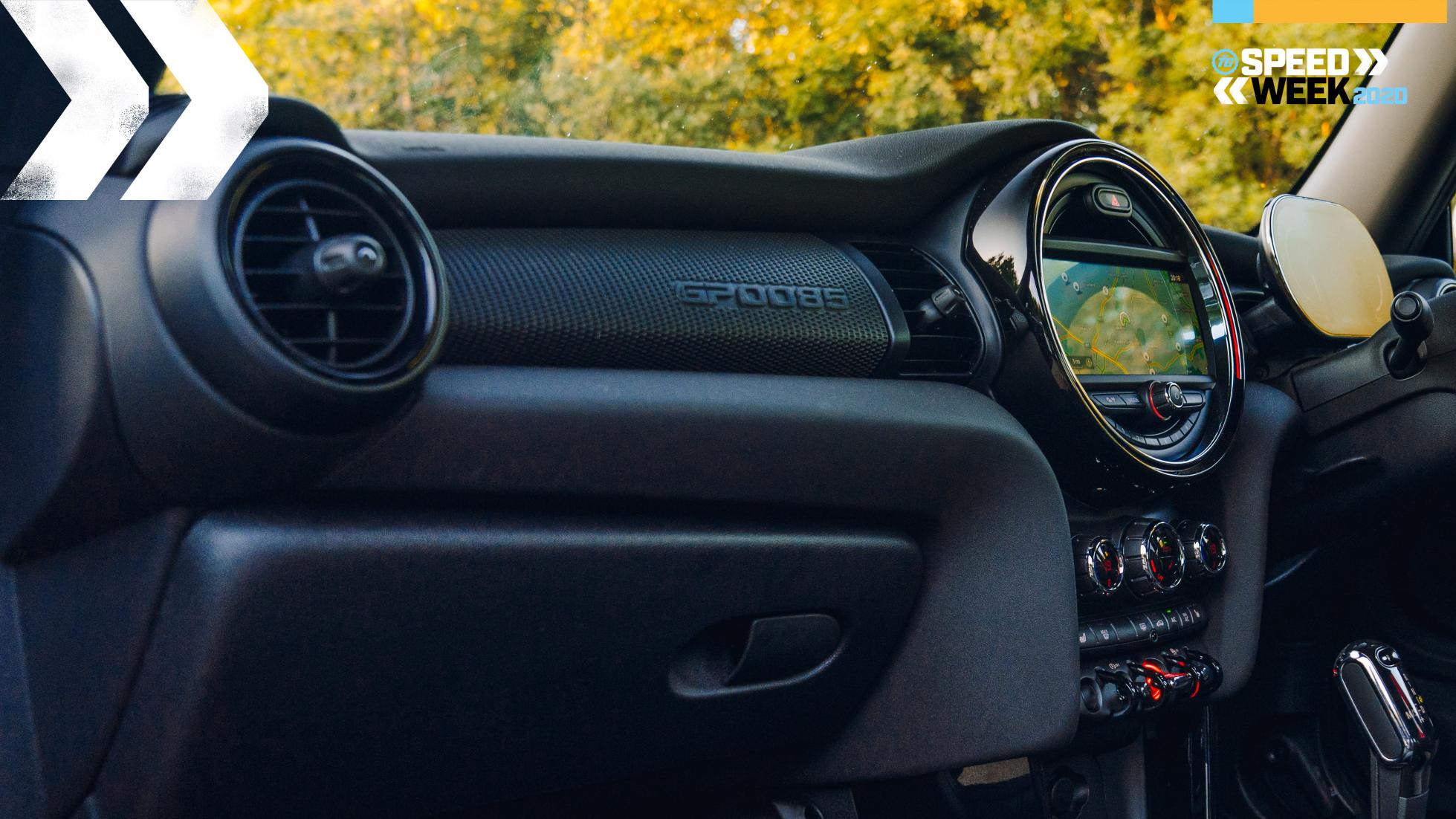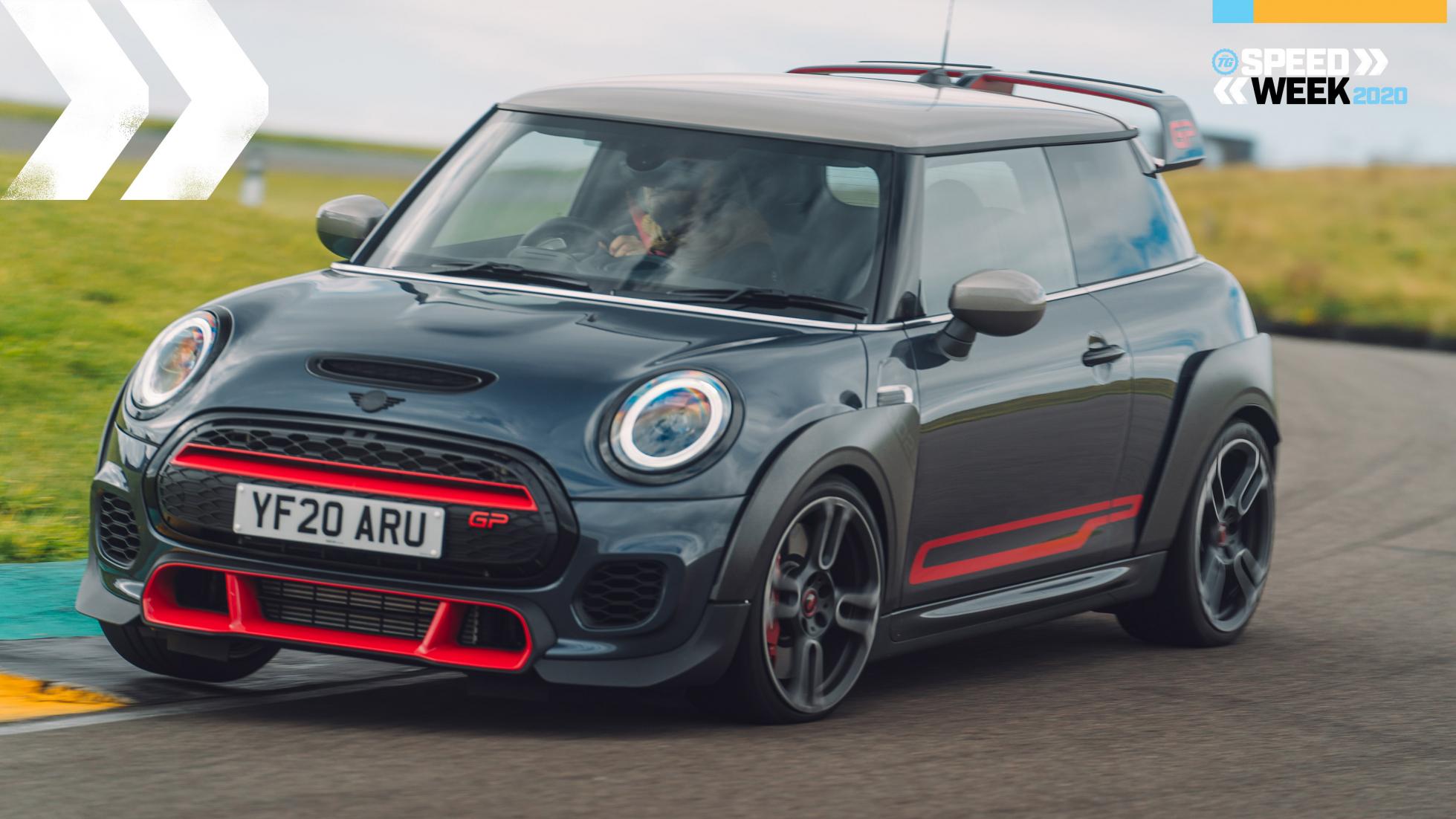
It’s the fastest and most powerful Mini ever
The third-gen GP is the first roadgoing Mini with more than 300bhp. Its 2.0-litre turbocharged four-cylinder engine, shared with the BMW M135i among others, makes 302bhp and 450Nm, which means…
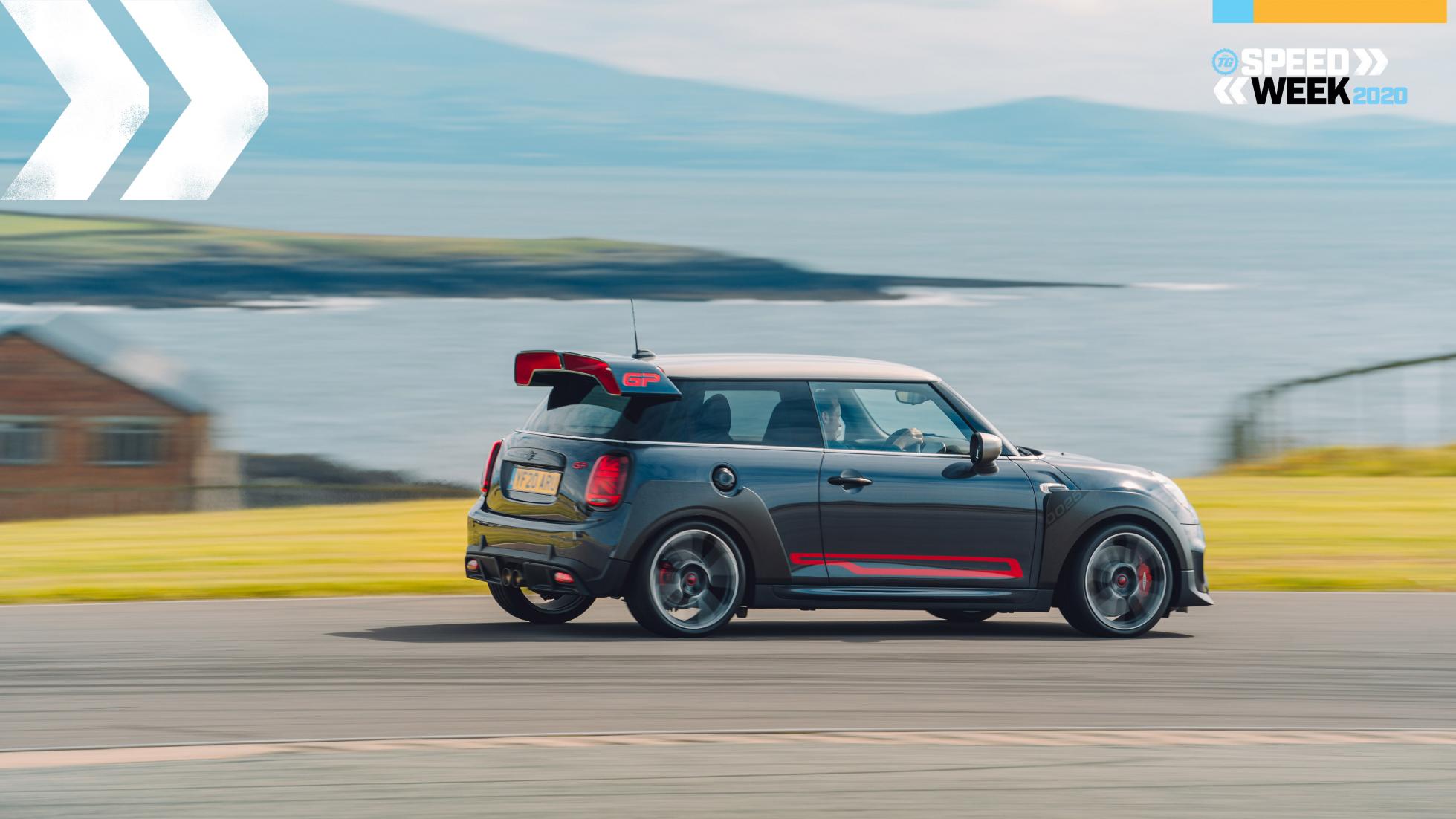
It’s faster than an Audi RS6*
*Well, kinda. The all-wheel drive, 600bhp Audi would obliterate the Mini in a race to pretty much any speed. Unless said speed is over 249kph. The RS6, and many other high-performance German cars, run into electronic buffers at 155mph unless you check the right options. The Mini GP, though, keeps going all the way to 164mph however you spec it.
Still, with a 0-100kph time of 5.2 seconds, this thing is right up there with the fastest front-wheel drive cars you can buy.
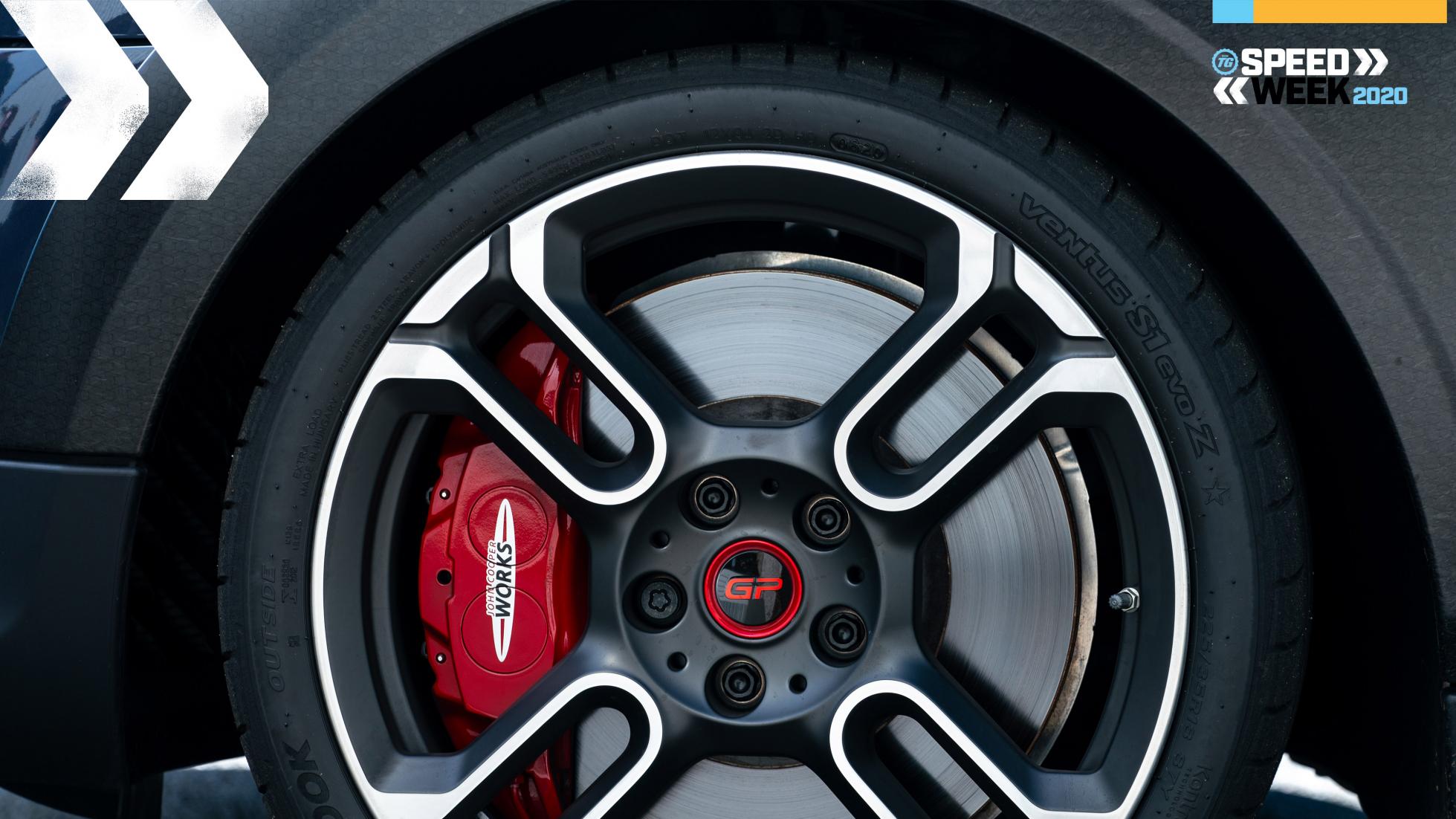
But it’s not actually that light
Mini is nothing like as committed as, say, Renault at light-weighting. Sure the GP loses its back seats in favour of a bright red strut brace, has less sound-deadening and special alloy wheels that only weigh 9kg a corner, but it still has big, comfy seats, an automatic gearbox, air-conditioning and the all-singing all-dancing infotainment system.
So it weighs 1,255kg – 70kg less than a normal Mini JCW, but only 6kg less than a Ford Fiesta ST. Hell, it only weighs 25kg less than a Toyota Yaris GR, and that has all-wheel drive…
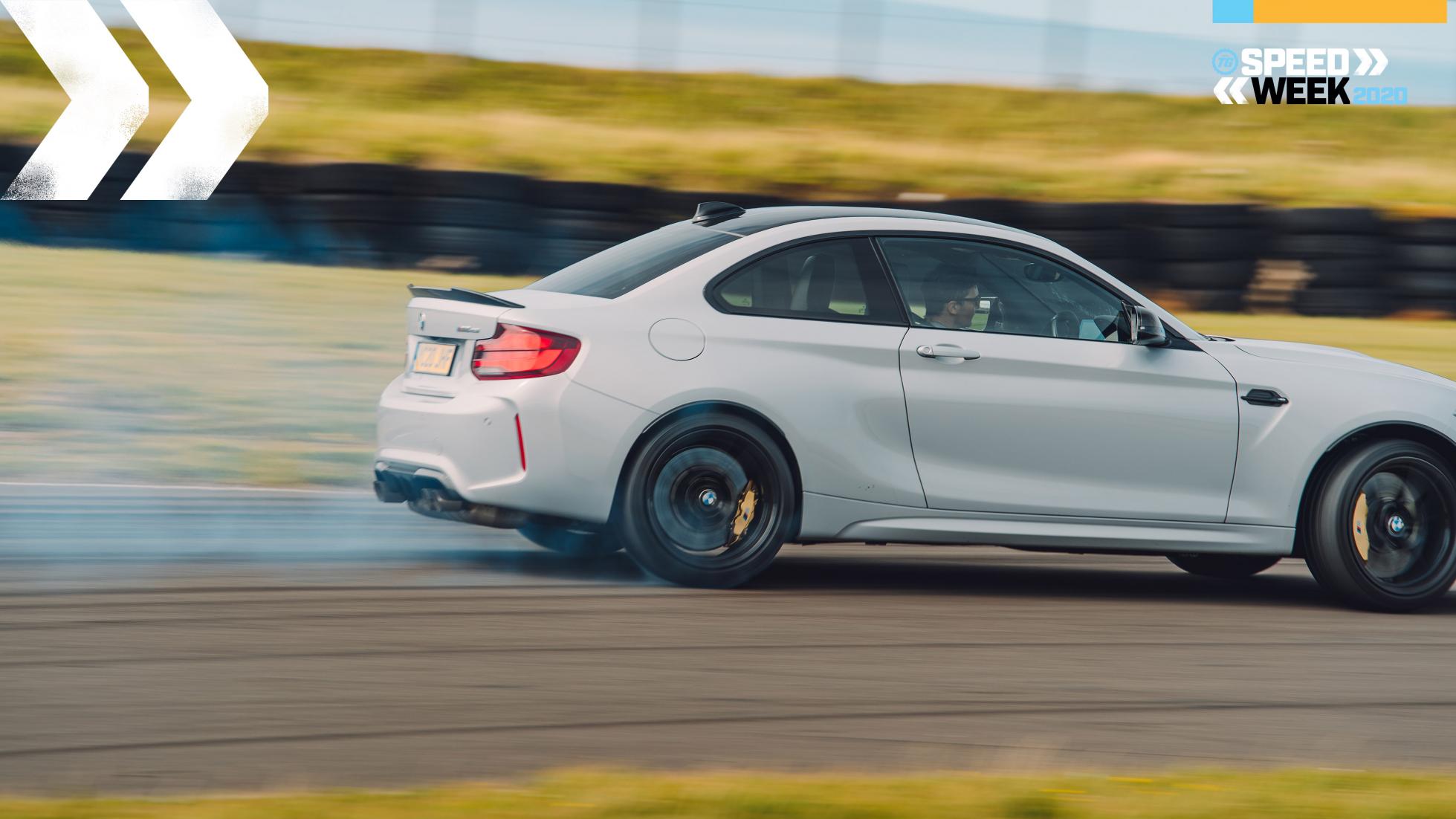
It’s as quick around the Nürburgring as a BMW M2
Mini says the GP can lap the ‘Ring in “under eight minutes”. While not as quick as other hardcore hot hatchbacks like the Megane Trophy or Civic Type R, that is about as fast as the more powerful rear-wheel drive BMW M2, and over 20 seconds quicker than the last-gen Mini GP.
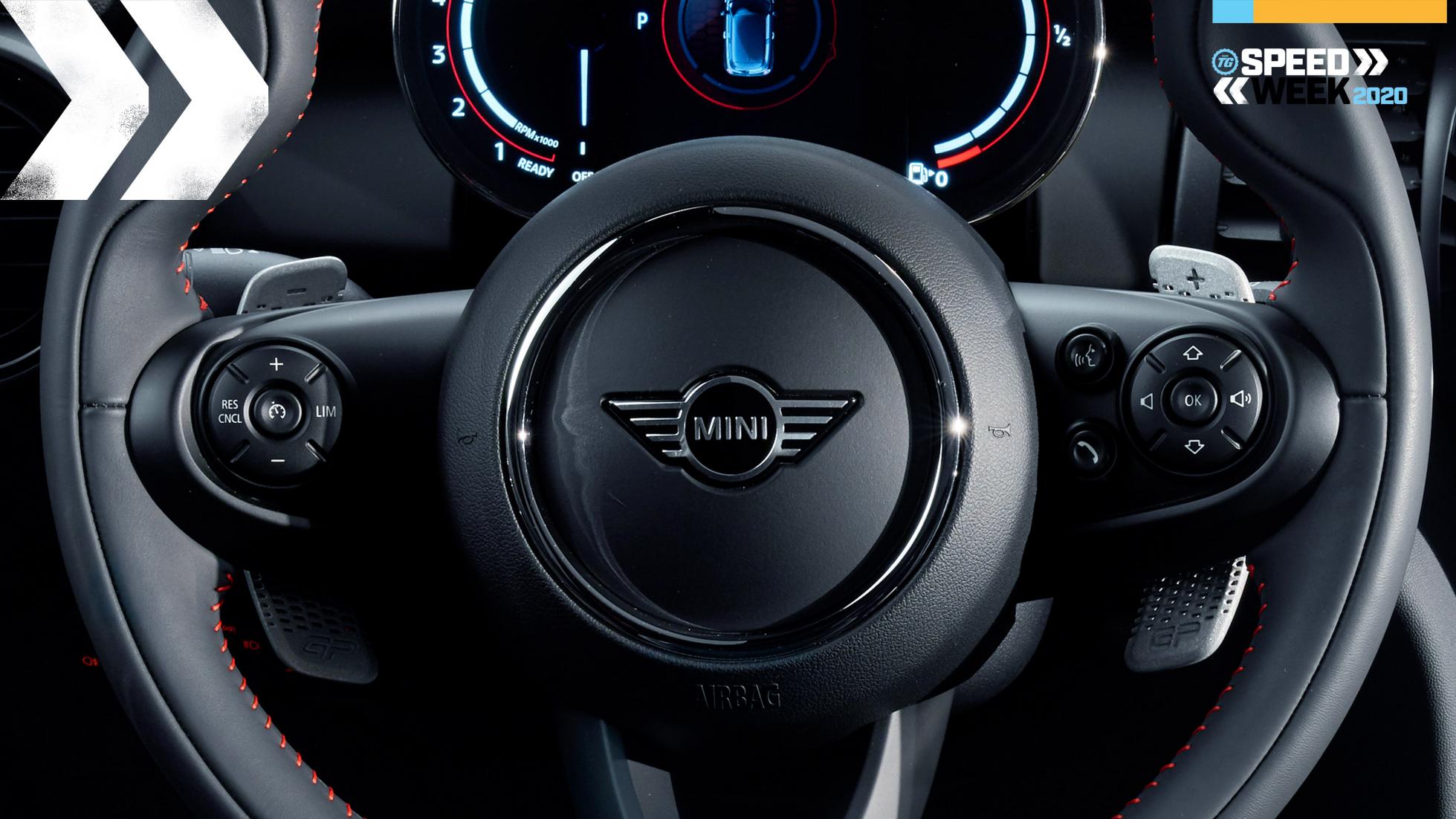
The paddle-shifters are 3D printed
One of the most disappointing things about the third-gen Mini GP is its eight-speed automatic gearbox. Least you get proper paddles instead of plasticy buttons – the GP’s paddles are 3D-printed from aluminium.
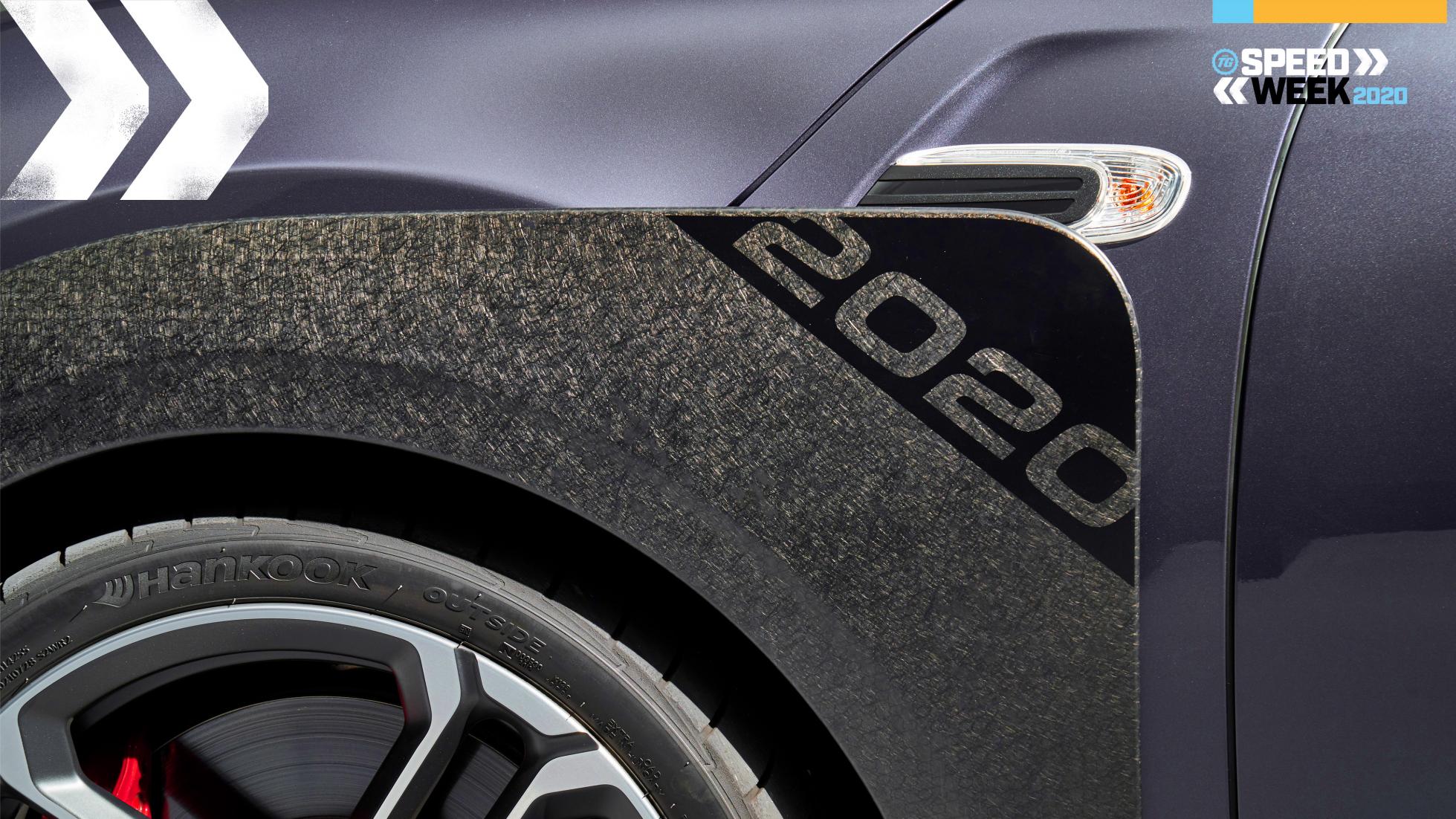
It uses lots of recycled carbon
Those mad wheel-arch extensions are made from leftover carbon-fibre-reinforced plastic from the BMW i3 and i8. They mask the wider track and look ridiculous, but don’t actually give much (if any) aero benefit… Mini stresses the GP is supposed to feel agile and cheeky, not locked-down, so it won’t say how much downforce it makes. Still, we’re told lift is “significantly reduced” versus the normal hatch.
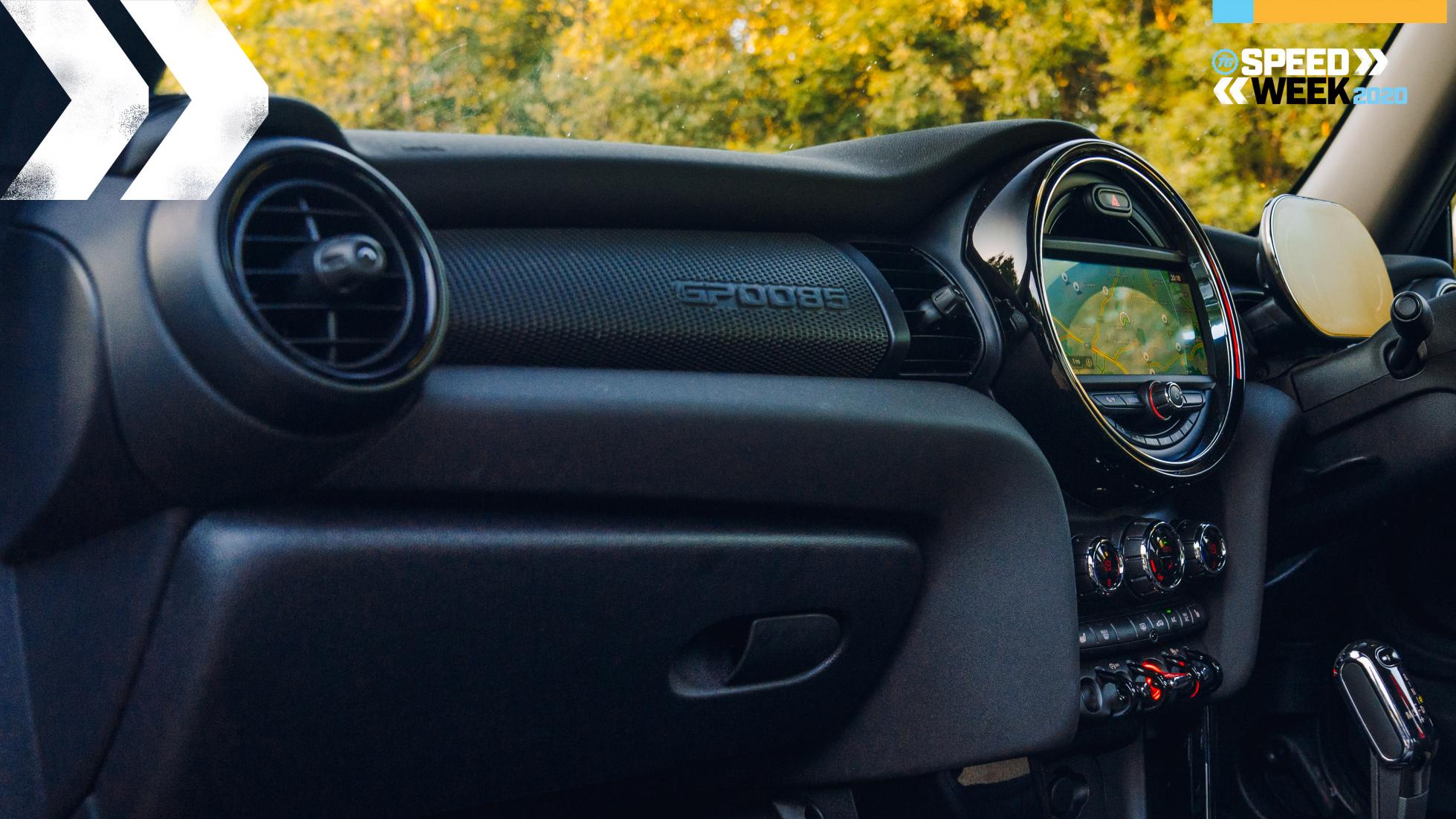
It’s easy to tell what number yours is
Only 575 GPs are coming to the UK, from a grand total of 3,000 cars. And it’s easy to tell which one it is you’ve bought/seen in the supermarket car park. Peer through the window and you’ll see the 3D-printed badge on the dashboard, or check out the CFRP wheel-arch extensions. Each car’s build number is applied using a “newly-developed paint transfer process”.
